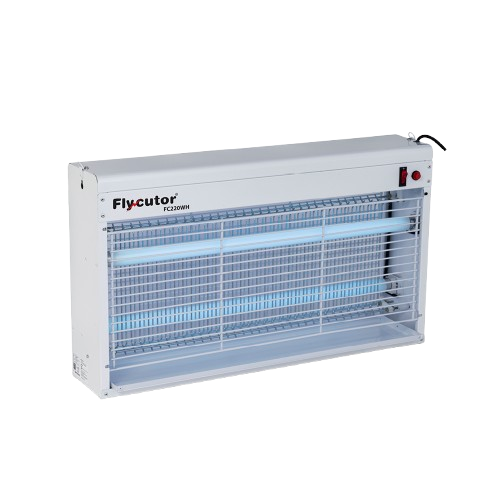Flying insects are a nuisance in our lives. They become intolerable during the warmer months, especially during the fish drying season in the coastal areas. Traditional sprays and modern flying insect killers are the popular options available now. This blog aims to weigh the pros and cons of traditional insect killers and modern Flying Insect Killers, and things people don’t usually discuss.
Why Traditional Sprays Aren’t Always the Answer
Insect sprays are easily available in a wide range of formulations, and they are effective against a broad spectrum of insects like mosquitoes, flies, ticks, etc. The spray bottle is portable, easy to carry and more convenient. They can be used in both indoor and outdoor environments. But are they the best option available? Let us explore the cons of them.
You know that smell that hits you when someone sprays around? It is not always a pleasant fragrance, that is because of its chemical composition. Also, have you read the labels on the bottle? They will always carry this caution statement: Keep out of reach of children. And if you have kids, pets, or even just a slightly squeamish stomach, it could be a lot to digest.
- Quick but short-lived: Sprays work fast, sure, but the effect fades almost immediately. So, you would have zapped some flies quickly. But just after five minutes, if it is in season, you find a couple more circling you.
- Chemical exposure: By spraying traditional sprays, you’re basically coating your space with toxins. Not fun, not eco-friendly, not exactly what I’d call safe. And especially when you have kids, the elderly, or pets around, it is not the safest option.
- Mess factor: When you see a lot of insects flying around your space, you would probably end up spraying the entire room. The result? Sticky floors, walls, doors and furniture.
Insect sprays are easily available, cost-competitive and offer the feeling that you are doing something to deal with the threat of insects. But if you’re aiming for long-term pest-free peace, sprays are a bit like putting a tiny bandage on a leaky pipe.
Why Flying Insect Killer is a Better Option
A Flying Insect Killer attracts insects using the UV light. When they come in contact with the electric grid, the insects get electrocuted. Here’s where things get interesting. Even though flying insect killers are not a magic wand of a solution, they are more like silent bodyguards for your home or office.
- Works 24/7: Once it’s set up, it keeps going. You don’t have to spray every half-hour or run around swatting at flies.
- Safe for people and pets: Most modern devices, like those from Flintron, don’t rely on chemicals. That means no weird smells, no toxins, just clean, safe pest control.
- Eco-friendly: Honestly, it’s a relief knowing you’re not contributing more poison to the environment.
The Long-Term Benefits
Sprays feel like a fix. Flying Insect Killers are more like a strategy.
- Cost-effective: You pay a little upfront, but over time, it’s cheaper than constantly buying sprays and dealing with recurring pests.
- Less hassle: No reminders to spray, no cleaning up residue, no sneezing fits.
- Consistency: The same level of protection day in, day out. That’s something sprays rarely give you.
It’s not perfect. Some bugs may be stubborn, or you might need multiple devices for a bigger space. But still, the overall peace of mind is huge.
Who Should Consider Switching?
Honestly, anyone who’s tired of short-term solutions.
- Health-conscious homeowners: You’ve got kids or pets running around. Safety is your top priority.
- Eco-conscious consumers: You care about sustainability, and traditional sprays just don’t fit.
- Business owners or facility managers: You need a hygienic, pest-free space without affecting operations or customer experience.
If that’s you, then a Flying Insect Killer isn’t just a gadget. It’s a small investment that pays off in stress reduction, fewer pests, and a cleaner, safer environment.
Traditional Sprays vs Flying Insect Killer — Quick Recap
| Feature | Traditional Sprays | Flying Insect Killer |
| Safety | Low (chemicals everywhere) | High (mostly chemical-free) |
| Duration | Short-term | Long-term |
| Maintenance | Frequent | Minimal |
| Eco-Friendliness | Low | High |
| Cost | Low upfront, high over time | Moderate upfront, lower long-term |
See? The numbers speak for themselves, even if you ignore the smell and hassle factor.
Bottom Line
Look, sprays aren’t evil. They have their moments — maybe you forgot to turn on the Flying Insect Killer, or there’s a sudden swarm. But for everyday, ongoing protection, especially in homes or offices where safety matters, the modern approach is clear.
If you want a Flying Insect Killer that works, is safe, and actually keeps pests away without drama, check out Flintron. They make eco-friendly, tech-based devices that do exactly what they promise — quietly, efficiently, and safely.
And honestly? Once you go this route, you start wondering why you ever ran around waving a can of spray.




